2019.03.29Field Report
Being a Part of the "AKARI" Bringing Light to People Project, Report by Volunteer Employee Reporters
2013.10.01 Field Report
In India, we are working with World Health Partners, an organization that provides remote medicine to rural communities. The compact solar lights are the only source of light during night visits to houses without power.

Hello, this is Hal, project coordinator for India.
In India, we donated 5,000 compact solar lights in cooperation with four partner organizations in March 2013. In continuation to the previous report, I report on my visit this July. To see whether the lanterns genuinely help to improve the lives of the local people who are really in need, I visited Bihar, the poorest state in India.
Bihar is located in the northeast of India and is said to be the poorest state in the country. On this inspection, I visited Vaishali village, about two to three hours by car from the state capital, Patna.
It was the middle of the rainy season. The sky was overcast and the road was a quagmire. The entire village felt gloomy. Of course, there were almost no houses that were using electricity.
The simple houses constructed of wood and bark and the muddy kitchen utensils told of the tough living conditions of the villagers.
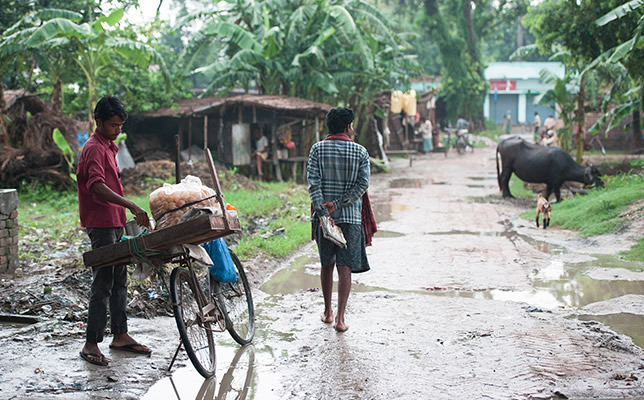
Due to the rainy season, the road was muddy and in a bad condition.
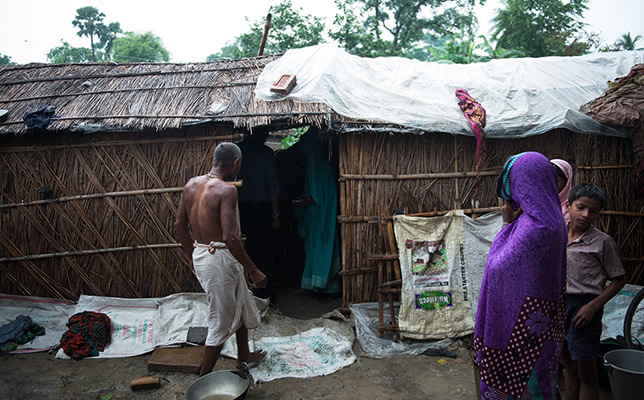
A rural neighborhood in Bihar, where many of the houses are of a simple construction.
World Health Partners (WHP), which distributes the compact solar lights in this village, is an organization which provides remote medical care to rural neighborhoods.
WHP uses the internet to provide low-cost medical consultations and advice on medicine to people who cannot travel as far as the hospital or afford to pay consultation fees.

The health center where remote medical care is provided also has a pharmacy.
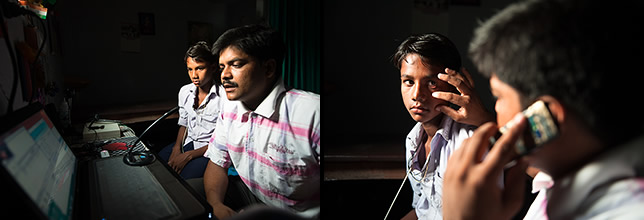
Patients can connect with a doctor in an urban area over the internet and get a medical interview.
In addition to welfare counselors trained by the organization, WHP also cooperates with the "ASHAs (Accredited Social Health Activists)" for each region to provide medical examinations to each family.
ASHAs are women licensed by the government to give basic medical interviews and health support in regions without doctors.
Some of the compact solar lights were distributed to ASHAs in rural communities.
I was able to accompany an ASHA on a night-time medical visit. Of course, the house we visited had no electricity, and the medical examination was carried out using nothing but a compact solar light.
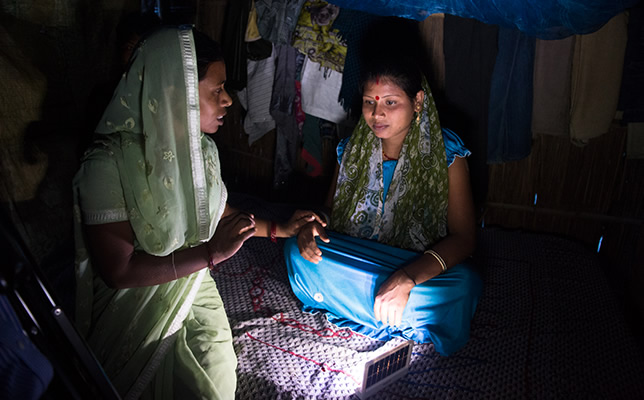
An ASHA examines a woman's leg.
In addition to ASHAs, WHP also distributes compact solar lights to families who use its services and are eligible for a BPL card, which is given to people subsiding on the lowest of incomes under the poverty line.
In one house, a man was teaching children under a compact solar light. The man has an academic background, which is unusual in a rural neighborhood, and he brings together his children and those of his relatives to study for one hour each night.
In India, government support means that even the poor can go to school until around elementary school age, but people say it is very difficult to advance to the next grade. I also came upon children studying hard under a compact solar light several times at other houses.
Having seen the children studying so diligently, I thought it might be possible to use a few compact solar lights at a meeting place of some sort to bring children together to study more effectively.
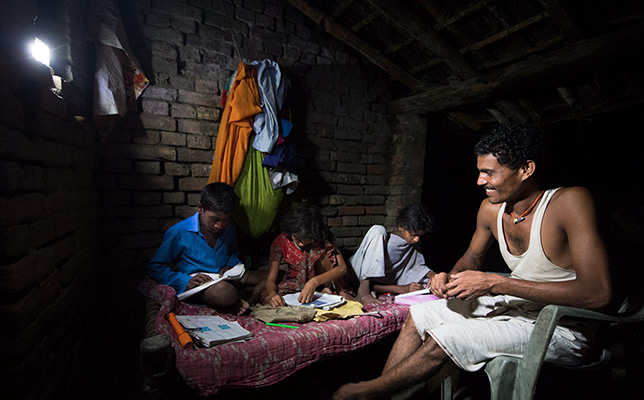
A man teaches three children.
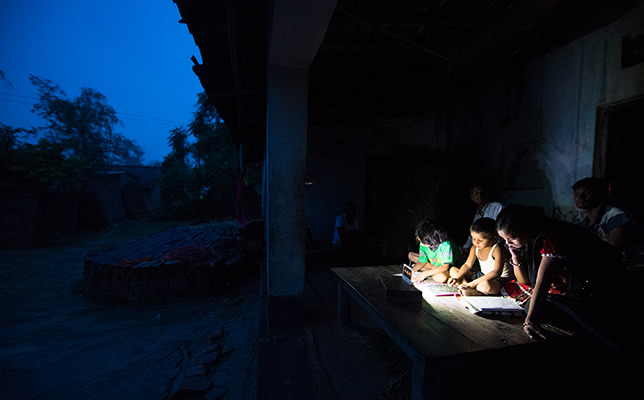
While all is dark, children study under a compact solar light on the veranda.
As we moved even deeper into the village, little specks of light came into sight one by one against the pitch black. As we approached, we saw that these were compact solar lights.
Every house was using a compact solar light in their dinner preparations, study, or work.
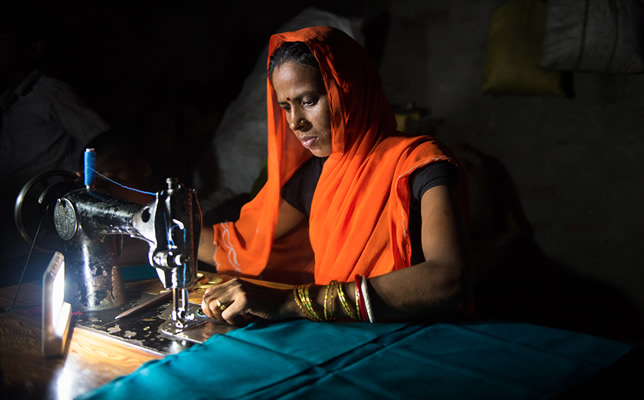
A woman uses a compact solar light to work at a sewing machine at night.
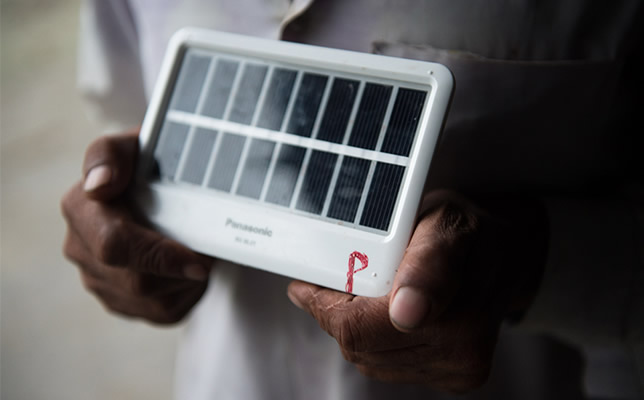
The people treasure their solar lights. Some have written their initials on them so that no one would take them by mistake when they are charging.
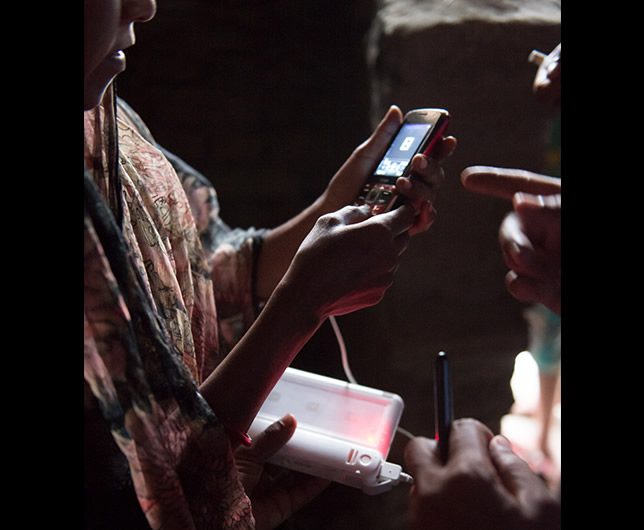
Compact solar lights can also be used to charge mobile phones. But many plugs are incompatible with the charging socket, and some people say they would like a greater variety of plugs supported.
It was impressive that the compact solar lights had become part of daily life in the village. I was quite moved at how every family used them so naturally.
The WHP were working very proactively to link this project with an improvement in their service.
They arranged everything properly, from selection to management of the families receiving a solar lantern. I was very happy to see that they made sure the compact solar lights were delivered to those who really needed them.
During my stay, I often heard the opinion that products made in Japan are durable, but expensive. I felt we should respond to the needs of the local people and set a price that the people at the BoP can afford.
A new solar lantern will be announced this autumn.
I took one of the new models on this inspection. When I tried turning it on, I found that it was bright enough to light up the whole room.
I left the village brimming with confidence that the solar lantern will be of assistance in further improving the lives of the people living in rural communities without power.
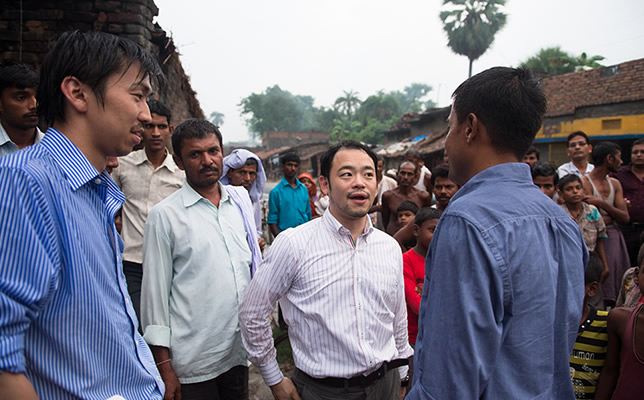
Thanks to the WHP staff, I was able to hear many opinions from local people.